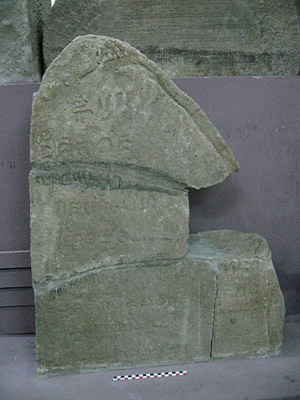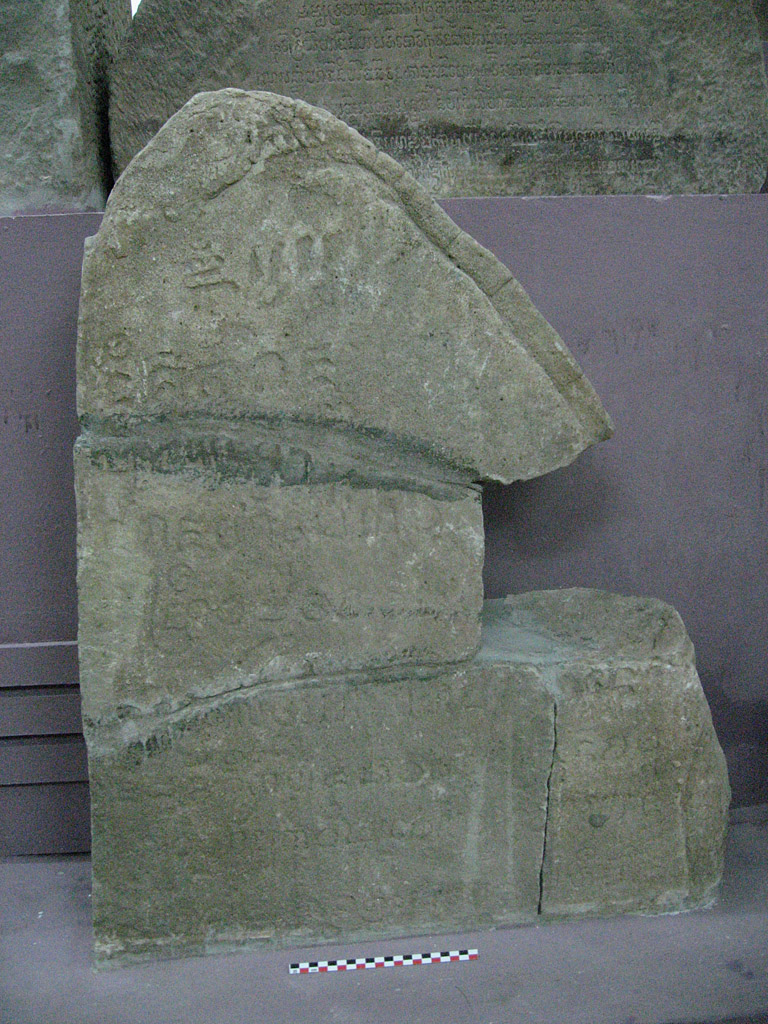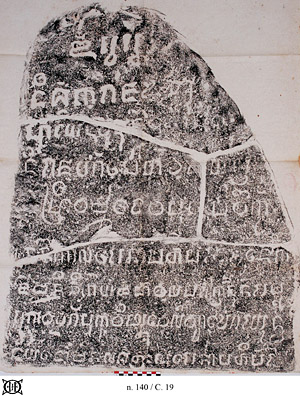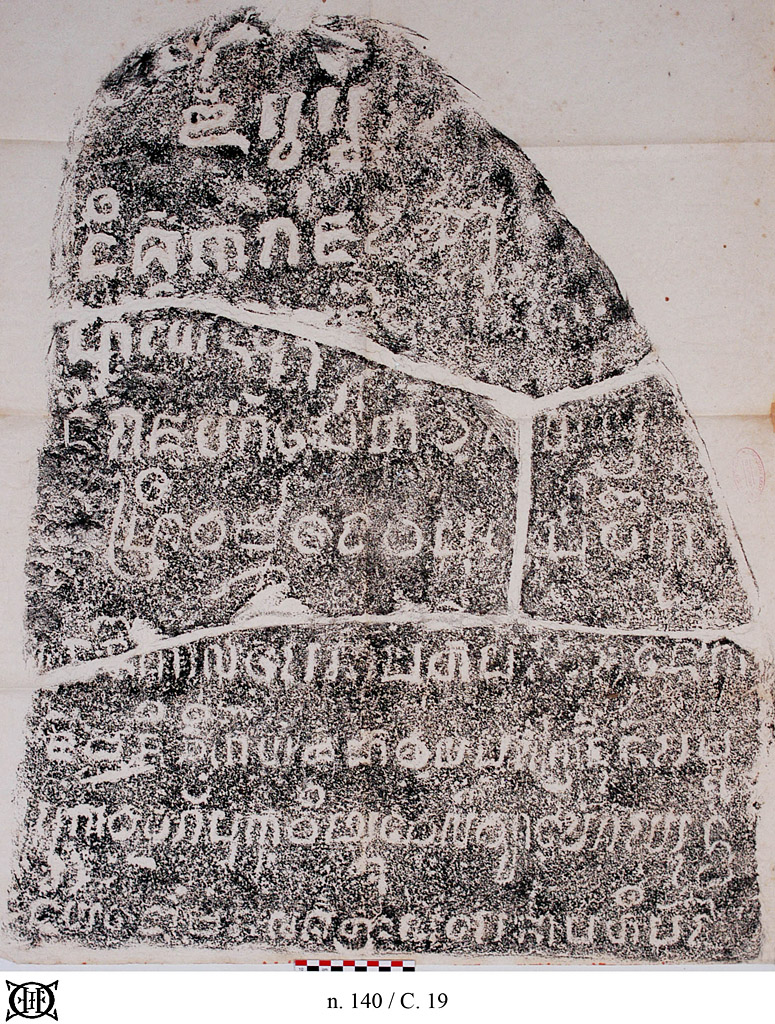Corpus of the Inscriptions of Campā




C. 19 Stela from Glai Klaong Anâk
Please note: you are reviewing a preprint version of this publication. Contents here may change significantly in future versions. Scholars with specific interests are urged to consult all cited bibliography before using our texts and translations or drawing other significant conclusions.
Text Ten lines on one face written in Old Cam.
Date 930 Śaka (1008/9 CE).
Origin Town of Phan Rang (Ninh Thuân, Vietnam).
The stela was found at Glai Klaong Anâk (modernised spelling for Klauṅ Anơk), a small coppice in the ricefields of Phan Rang , between the Ram Muslin village and a small village called Pralau (Bergaigne 1888: 77; Aymonier 1891: 23). Parmentier 1909: 72 tells us more about its provenance:
When the inscriptions of Campā were moved from the Saigon Museum to the EFEO Museum in Hanoi in 1910, the collection was completed by other inscriptions regarded as the most important pieces for the history of Campā; C. 19 was one of them (Finot 1915a: 2). Its inventory number B 2, 12 at the Museum was published in Finot 1915a: 8; whence, in the inventory of Campā inscriptions published in 1923, this local number was included under the entry C. 19 (Cœdès 1923). We identified the stone in the Bảo Tàng Lịch Sử Việt Nam (National Museum of Vietnamese History) at Hanoi in 2009 and following years, as the one bearing inventory number LSb 21169. The Museum assumed the new name Bảo Tàng Lịch Sử Quốc Gia (National Museum of History) in 2011, but this did not entail a change in the inventory number.[La] pierre inscrite faisait partie de l'enceinte du cimetière, elle s'appelle Glai Klauṅ Anơk pour les Čams, Giang Cố pour les Annamites ; triangulaire et plate, elle est cassée en quatre morceaux qui portent dix lignes assez frustes sur une face, rien sur l'autre.
Edition(s) A few words were deciphered in Bergaigne 1888: 77. Later, Aymonier 1891: 84-85 presented a partial French-language translation without publication of the text, whence Majumdar 1927: 65 and Golzio 2004: 52. This inscription was edited, with French translation, in ECIC III: 445-446, which publication is reproduced here.
Facsimiles
- Estampage: EFEO 129
- Estampage: EFEO n. 140.1
The following text was edited by Arlo Griffiths, Amandine Lepoutre, and William Southworth.
7 dhaṅā vala ◇ mahāvala Bergaigne & Aymonier. On the estampage, this reading seems to be more than suspicious. Moreover this compound mahāvala figures nowhere in the corpus, whereas the word vala it frequenly used by itself. — (du `na´ n)(·) ◇ The presence of an akṣara above the line can be guessed. If it is read as na, it should be inserted between du and n·, and we must accept that it has been sbeen engraved a little too far left. Alternatively, the reading ma is possible, and the sequence can then be restored as follows: parākra `ma´ jun·. — 8 samū svabhāva ◇ The words samū and svabhāva appear twice together elsewhere namely in C. 90, face B, ll. 12 and 27. — vela ◇ Other readings are possible: vel· and velaṁ.
Translations
English
Om ! Hail ! [In the year of the] Śaka king 930, day 4/5 of the waxing [fortnight] of month 10 (that is to say Mārgaśīrṣa), during the reign of Y.P.K. the victorious Śrī Harivarmadeva, my master ... It was the time when the general Pam̃ Rauṅ from Dauk Jā, (village) Manacīk ... The latter is of the same nature as Y.P.K. Viṣṇu ... horrible war in all the districts of the ennemies, the general Pam̃r Rauṅ ...
French
Om ! Salut ! [En l'année] 930 [du] roi des Śaka, jour 4/5 [de la] (quinzaine) croissante du mois 10 (c.-à-d. mārgaśīrṣa), au cours du règne de Y.P.K. le victorieux Śrī Harivarmadeva, mon maître ... Ce fut le temps où le général Pam̃ Rauṅ de Dauk Jā, (village) Manacīk ... Ce dernier est de la même nature que Y.P.K. Viṣṇu ... guerre horrible dans tous les districts des ennemis, le général Pam̃r Rauṅ ...
Notes
- There are two estampages under the number n. 140.


